CMN 413
Corporate Communications

1. Course Description
How does a company communicate its reputation and image and manage these intangible features when damaged? Through examining high-level communication strategies and products, students develop sensitivity to the language, formats, and images organizations use to manage their concerns. Students also practice skills corporate communication professionals employ to communicate with a variety of audiences.
Last Revised
Prerequisites
CMN 100 or CMN 114 or CMN 124 or CMN 200 or CMN 201 or CMN 207 or CMN 279 or CMN 300 or CMN 373 or Direct Entry
Delivery
Lecture: 2 hours, Lab: 1 hour
2. Course Objectives & Learning Outcomes
- To understand the basic strategies and practices of the organizational reputation and issues management function
- To determine the appropriate mediums and channels for communicating specific issues-related to a variety of audiences with varied concerns
- To produce a variety of written reputation and issues management communications
3. Topics Covered
In addition to section 3.1, material from other sections will be selected for study as appropriate to the specializations and interests of the class.
- Introduction to the corporate communication function
- Internal corporate communication
- Management messages (such as directives and announcements)
- Company newsletters, newspapers, and magazines
- External corporate communication
- Public relations material (such as news releases and backgrounders)
- Image-enhancement material (such as articles in journals and trade press)
- Stockholder relations (such as annual reports) 3.3.4 Paid publicity (such as advertorials)
- Crisis management
- Corporate citizenship
- Technology and corporate communication
4. Teaching Method
Lectures and Seminars
Teaching will be conducted by lectures plus seminars. In seminars students will have the opportunity to deliver reports that expand on lecture material. Evaluation will be based on a minimum of five term assignments.
5. Course Materials
Topicality and flexibility will be achieved by use of current business periodicals and supplementary material instead of a prescribed text.
6. Policy
6.1 University Policies
Students are required to adhere to all applicable university policies found in their Online course shell in D2L and the Course Outline Policies.
6.2 Print and Digital Copying Guidelines:
Toronto Metropolitan University complies with Canada’s Copyright Act which protects both creators/owners and users of copyrighted materials. Students should familiarize themselves with TMU Copyright policies and procedures, and contact the Copyright and Scholarly Engagement Librarian at copyrt@ryerson.ca for questions, concerns and clarification of the copyright rules.
6.3 Turnitin.com
Turnitin.com is a plagiarism prevention and detection service to which Toronto Metropolitan University subscribes. It is a tool that helps instructors determine the similarity between student work and the work of other students who have submitted papers to the site (at any university), Internet sources, and a wide range of books, journals, and other publications. While it does not contain all possible sources, it gives instructors some assurance that students’ work is their own. No decisions are made by the service; it generates an “originality report,” which instructors must evaluate to judge whether something is plagiarized.
Students agree by taking this course that their written work will be subject to submission for textual similarity review to Turnitin.com. All submitted papers will be included as source documents in the Turnitin.com reference database solely for the purpose of comparing the similarity of such papers. Use of the Turnitin.com service is subject to the terms-of-use agreement posted on the Turnitin.com website. Students who do not want their work submitted to this plagiarism detection service must, by the end of the second week of class, consult with their instructor to make alternative arrangements. Even when an instructor has not indicated that a plagiarism detection service will be used, or when a student has opted out of the plagiarism detection service, if the instructor has reason to suspect that an individual piece of work has been plagiarized, the instructor is permitted to submit that work in a non-identifying way to any plagiarism detection service.
6.4 Email Communication
Toronto Metropolitan University requires that any official or formal email communication from students be sent from their official Toronto Metropolitan University electronic accounts.
6.5 Video and Audio Recording
No video or audio recording is permitted in class without the express permission of the instructor.
7. Learning Management System
Toronto Metropolitan University supports Brightspace by D2L as its official Learning Management System. University Policies governing Brightspace have been documented at the Courses @ Toronto Metropolitan University Privacy and Security website.

